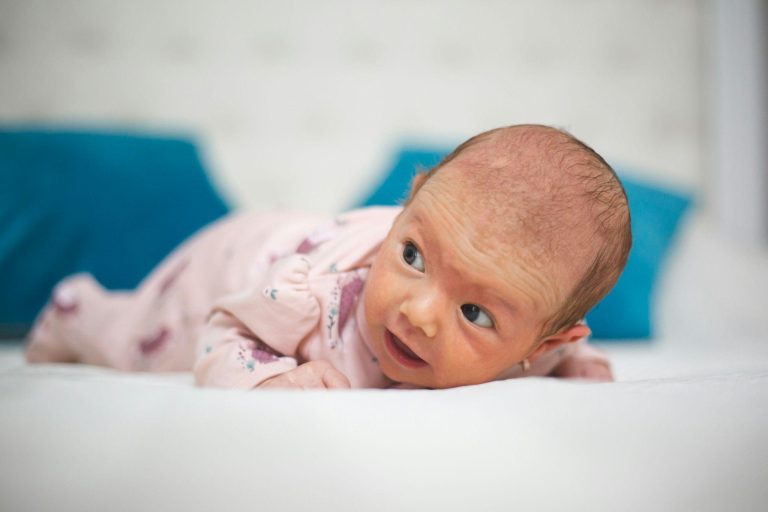What are the Risks of Using an Unsafe Co-Sleeper?

Are you worried about your baby’s sleep safety? Many parents choose co-sleepers for convenience, but using an unsafe one can put your little one at risk.
Unsafe co-sleepers may lead to serious hazards like suffocation, falls, or entrapment.
This article will guide you through the key risks of unsafe co-sleepers and help you make informed choices for your baby’s sleep environment.
We’ll explore ten crucial factors that can compromise your infant’s well-being and explain why choosing the safest co-sleeper is vital.
By the end of this post, you’ll understand the potential dangers lurking in unsafe co-sleepers and gain valuable insights to ensure your baby sleeps soundly and securely.
Let’s dive into the world of co-sleeper safety and give you peace of mind for those precious nighttime hours.
Main Risks of Using an Unsafe Co-Sleeper

1. Suffocation
Soft bedding and pillows in co-sleepers can be risky for babies. These items might block a baby’s nose and mouth, making breathing hard.
Think about a baby rolling onto its tummy while asleep. If there’s soft bedding nearby, the baby’s face could press against it, stopping air from reaching its nose and mouth.
Use only a firm mattress with a fitted sheet in the sleeping area to keep babies safe. Do not use extra blankets, pillows, or soft toys.
This helps ensure your baby can breathe freely, even if it rolls over.
2. Entrapment
Gaps in co-sleepers can be a real danger for babies. These spaces might trap a baby’s head or body, causing harm.
Picture this: a small gap forms between the mattress and the side of the co-sleeper. A baby could get stuck in this space. If they can’t move, it could lead to serious problems.
For instance, a baby might roll and get their arm or leg caught. They could get hurt trying to free themselves. In worse cases, if their head gets trapped, they might not be able to breathe.
To avoid this, ensure your co-sleeper fits snugly against your bed and regularly check for gaps or spaces.
A safe co-sleeper should have no room for a baby to get stuck. Always follow the maker’s setup instructions to keep your little one secure.
3. Falls
Co-sleepers that aren’t properly secured can be risky. A baby might tumble out if the co-sleeper isn’t firmly attached to the bed.
Such falls can hurt your baby badly. They might bump their head or even break a bone.
For example, a 6-month-old could roll and fall from an unsecured co-sleeper. The fall might cause a bump on the head or a fractured arm.
Always ensure your co-sleeper is tightly fixed to your bed to prevent falls. Check the attachments often.
Also, keep the mattress at the right height. These steps can help keep your baby safe and snug all night long.
4. Strangulation
Loose items in or near a co-sleeper can put a baby at risk. Fabric, straps, or cords might wrap around a baby’s neck.
A baby could get tangled in loose bedding while moving.
They might reach out and grab a nearby cord, which could lead to choking or breathing problems.
To avoid this, keep the co-sleeper area clear. Remove any loose fabrics or cords. Ensure all co-sleeper parts are secure and can’t come loose.
Always check the area before putting your baby down to sleep. This helps ensure a safe sleep space for your little one.
5. Overheating
Poor airflow in a co-sleeper can make your baby too warm. Heavy blankets or high room heat can also cause this problem.
When babies get too hot, they may have trouble sleeping and are at risk of health issues.
For example, a baby in a stuffy co-sleeper with thick blankets might overheat during the night.
Overheating is linked to Sudden Infant Death Syndrome (SIDS). This makes it a serious concern for parents.
To keep your baby safe, ensure the co-sleeper has good airflow. Use light bedding and keep the room at a cool, comfy temp.
6. Choking Hazards
Small things in a co-sleeper can be risky for babies. Loose bedding or tiny objects might cause choking.
Babies like to put things in their mouths. If they find small items in their sleep area, they might try to eat them. This can lead to choking, which is very dangerous.
For instance, a button that fell off a toy could end up in the co-sleeper. If a baby finds it, they might choke it in their mouth.
To keep your baby safe, always check the co-sleeper before use. Remove any small objects you find. Use only fitted sheets, not loose blankets.
Keep toys and other items out of the sleeping area. This will lower the risk of choking and help your baby sleep safely
7. Structural Integrity Issues
Co-sleepers that aren’t built well can be unsafe. They might break or fall apart while your baby is using them.
A weak co-sleeper could give way suddenly. This could cause your baby to fall or get stuck. These accidents can lead to injuries.
For example, a poorly made co-sleeper might collapse when your baby moves, causing your little one to fall out or get trapped between parts.
To avoid this, buy co-sleepers from trusted makers. Check that all parts are strong and fit together well.
Look for signs of wear and tear often. If you spot any problems, stop using the co-sleeper immediately.
Conclusion
Now that we’ve covered the risks of unsafe co-sleepers, you can see why choosing a safe sleep space for your baby is so important.
From suffocation and falls to SIDS and chemical exposure, the dangers are real but can be avoided.
Remember, a safe co-sleeper has a firm mattress, fits snugly against your bed, and is free from loose bedding or small objects.
Always check for structural integrity and use products from trusted makers.
By taking these steps, you can create a safer sleep environment for your little one.
If you’re unsure about your current setup, reviewing and making changes if needed is worth examining. Your baby’s safety is worth the effort.
Have questions about co-sleeper safety? Feel free to leave a comment below. Let’s work together to ensure our babies sleep soundly and safely every night.






